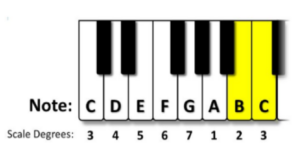The US Court of Appeals for the Tenth Circuit affirmed a district court’s grant of summary judgment in favor of a defendant baker on a trade dress infringement claim and reversed the district court’s denial of the defendant baker’s motions for judgment as a matter of law on trade secrets misappropriation and false advertising claims. Bimbo Bakeries USA, Inc. v. Sycamore, Case Nos. 18-4062; -4031; -4040 (10th Cir. Mar. 18, 2022) (Hartz, Phillips, Eid, JJ.)
Bimbo Bakeries (and its predecessor, EarthGrains Baking Companies) owns, bakes and sells Grandma Sycamore’s Home-Maid Bread, a popular bread in Utah. U.S. Bakery is a competitor, and Leland Sycamore is the baker who developed the Grandma Sycamore’s recipe. Sycamore parted with his interest in Grandma Sycamore’s and opened his own bakery, Wild Grains Bakery. U.S. Bakery hired Wild Grains Bakery to produce another homemade bread product, Grandma Emilie’s. The relationship soured, and U.S. Bakery moved its Grandma Emilie’s operations in-house. U.S. Bakery developed a new formula for Grandma Emilie’s and enlisted a former Wild Grain employee to help. U.S. Bakery also created packaging for the bread based on Grandma Sycamore’s packaging. U.S. Bakery used several taglines to help sell its products, including “Fresh. Local. Quality.”
Bimbo Bakeries (then EarthGrains) sued Leland Sycamore, Tyler Sycamore (Leland’s son and co-baker), Wild Grains Bakery and U.S. Bakery, alleging multiple claims related to the Grandma Emilie’s operations, including trade secret misappropriation under the Utah Uniform Trade Secrets Act and trade dress infringement, trade dress dilution, false designation of origin, false advertising and unfair competition under the Lanham Act. Bimbo Bakeries alleged that U.S. Bakery’s use of the word “local” in the tagline “Fresh. Local. Quality.” constituted false or misleading advertising because U.S. Bakery did not actually bake all its bread products within the state of sale. The district court granted summary judgment in favor of U.S. Bakery on the trade dress infringement claim. The parties went to trial on the trade secrets misappropriation and false advertising claims. The jury ruled in Bimbo Bakeries’ favor on both and awarded more than $2 million in damages. The district court increased the damages owed by U.S. Bakery by almost $800,000 because U.S. Bakery was found to have willfully and maliciously misappropriated Bimbo Bakeries’ trade secret. The district court remitted the jury’s damages for the false advertising claim to around $83,000. The district court also permanently enjoined U.S. Bakery and Sycamore from using Bimbo Bakeries’ trade secret and denied renewed motions by U.S. Bakery and Sycamore for judgment as a matter of law for the trade secrets misappropriation and false advertising claims.
Bimbo Bakeries, U.S. Bakery and Sycamore appealed. Bimbo Bakeries argued that the district court should not have granted U.S. Bakery summary judgment on its trade dress infringement claim and should not have remitted damages for the false advertising claim. U.S. Bakery and Sycamore argued that the district court should have granted their renewed motions for judgment as a matter of law for the trade secrets misappropriation and false advertising claims.
On [...]
Continue Reading
read more


 Subscribe
Subscribe



